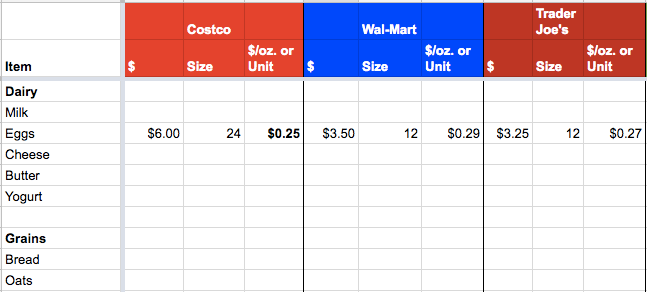Are you spending too much on video streaming services these days? Is the on-demand, a la carte, unlimited video content buffet not the utopian bliss that you were promised? Well, I’ll share a solution to that below, because it sounds like many of us need it. According to a JD Power survey last year, U.S. households spent an average of $55 per month on video streaming services, up from $47 in the year prior, and $38 the year before that. The number of subscription services “used” per month is increasing as well – with 57% of households now subscribing to 4 or more services and 22% subscribing to 7 (!) or more.
That’s a load of video content. Just thinking about trying to keep up with all of it (or at least getting enough value out of each service to justify the continued monthly cost) stresses me out. Remember not too long ago when cable television was the only show in town and we all complained about not being able to judiciously pick a la carte a limited selection of channels we wanted to watch with the goal of cost cutting? Now that we have something resembling that level of freedom, the standard is instead to gluttonously load up for multiple helpings at a buffet, while only eating a small portion of what we have paid for and intended to consume. This is why we can’t have nice things, my friends.

The good news is, you don’t have to gluttonously load up and spend this much on video streaming. You can get away spending just a fraction of the aforementioned amount, without missing out on any content.
Why Do We Spend So Much on Video Streaming?
Let’s start here: why are we spending so much on video streaming? I think the answer comes down to 2 common consumer traps:
FOMO: subscription services thrive on fear of missing out. Once a consumer subscribes to a service, they are usually flooded with reminders about all of the great new content coming out, and if that subscriber departs, all that they are missing out on. FOMO is aided, of course, by our pop culture driven peers who also take pleasure in letting us know we are missing out.
Inertia: if FOMO doesn’t reel you in to higher streaming costs, inertia might. Recurring subscriptions are easy to subscribe to and even easier to forget. If we don’t have a routine habit of cancelling them, we often just stay subscribed.
We don’t need to fall in to either consumer trap.
For starters, let’s all remind ourselves that video content is just another form of consumption, and a luxury one at that. It’s not a necessity, and most variations of it leave a lot to be desired. Your time could be better spent doing just about anything else, with few exceptions. Reminding ourselves of that versus approaching this expenditure category with a max consumption-driven “how do I get everything I want?” mindset is a good starting point. Less often is more with video entertainment.
Secondly, watching streaming video content months after release results in the exact same viewing experience as watching it seconds after it is released. It’s almost as if many treat on-demand video the same way they treated pre on demand TV – a weekly time commitment that cannot be missed. And in case you are worried that some friendships may suffer because you’re not caught up on the latest streaming series of the month, that may be a good sign that you’re hanging out with the wrong crowd.
How to Cut your Video Streaming Costs to Nearly Zero (without Missing Any Content)
If you still feel like you need video streaming content in your life, I’d like to propose a simple solution to the ever-expanding streaming service subscription expense category: a monthly subscription service rotation.
You simply set a calendar reminder for the beginning of every month to unsubscribe/subscribe. In 2 minutes your work is done.
You can arrange however you’d like, but an example monthly rotation might look like:
- January: Netflix ($9.99/month)
- February: Amazon Prime Video (comes free with Amazon Prime, $8.99/month if you don’t have a Prime subscription)
- March: Hulu (30-day free trial, then $6.99/month w/ads or $12.99/month ad-free)
- April: Disney+ ($7.99/month)
- May: HBO Max (with ads: $9.99/month, ad-free: $14.99/month)
- June: Apple TV+ (1 week free trial, then $4.99/month – Best Buy offers 3 months free for new users if you have an account)
- July: Netflix (again)
- August: Peacock (free tier, $4.99/month for “Premium”, $9.99/month for “Plus”)
- September: YouTube TV (usually runs 1 week free trial. Get $30 off first bill with this referral link)
- October: Showtime (30 days free, then $10.99/month)
- November: Paramount+ (1 week free trial, then $4.99 for “Essential” or $9.99 for “Premium” per month)
- PBS Passport ($5/month donation)
It’s a dead simple strategy for those who do not want to give up the luxury that is streaming video subscriptions, but it works for the following reasons:
- Content that is original to a particular streaming service often stays on that service for a long time, if not indefinitely. The service wants to lure in new and recurring subscribers and they’ve already paid for the production, so removing it takes away a value add for new and existing subscribers.
- If available content is not original to that service, it is often easy and cheap to find elsewhere (our local library, for example, rents out just about every popular TV show and movie, for free, as do many others).
- Seasonal series usually generate 8-12 episodes of content once per season and then release it weekly for 2-3 months with huge 8-9 month breaks in between. They then typically keep those episodes available in their back catalog.
- Subscribers can easily unsubscribe and resubscribe later, often without missing a thing.
This combination of streaming service realities gives consumers the power to switch and rotate between services, with little effort and no cost, without missing “must-see” content.
And with a rotation like this, there are 2 huge benefits versus the subscribe-to-it-and-forget-it path that many are on:
- You binge what you feel like you need to binge on just 1 streaming service at a time, without the stress of feeling like you have to keep up with 5 or 7 different services and extract enough value from each. It is cleaner, simpler, and less stressful.
- At 1 service per month as highlighted above (and excluding free trials and opting for base tiers, when available) the average cost per month would be $8.33 using this strategy. You’d save about $47 (85%) per month versus the average household (spending $55/month) – likely more with free trials and promotions.
Additionally, before you switch to a new service at the start of a given month, check for other available promotions, including your credit card offers or on shopping portal sites like Rakuten. I’ve found that there are often credit card offers with heavily discounted or even free video streaming discounts, such as this one I was recently offered one one of my AmEx cards:

How to Cut your Video Streaming Bills to Zero
If you want to take things even further and spend nothing on monthly streaming services (I highly recommend), it’s easier than ever to do that as well, with a combination of:
- Free DVD/Blu-Ray (and yes, possibly even streaming from Hoopla and Kanopy) rentals from your local library
- An OTA digital antenna
- Good ole YouTube
- A Roku or similar streaming device, with hundreds of free apps with free video content available, including:
- Peacock: “free tier” has access to over 40,000 movies and TV shows
- Comet: sci-fi, with shows like The X-Files
- History: streaming most of the cable channel’s shows
- PlutoTV: a big selection of live TV and on demand content
- Roku Channel: tons of free content and live TV
With all of these options and a little strategy, there’s really no good reason to ever blow $57+ per month on streaming services.





